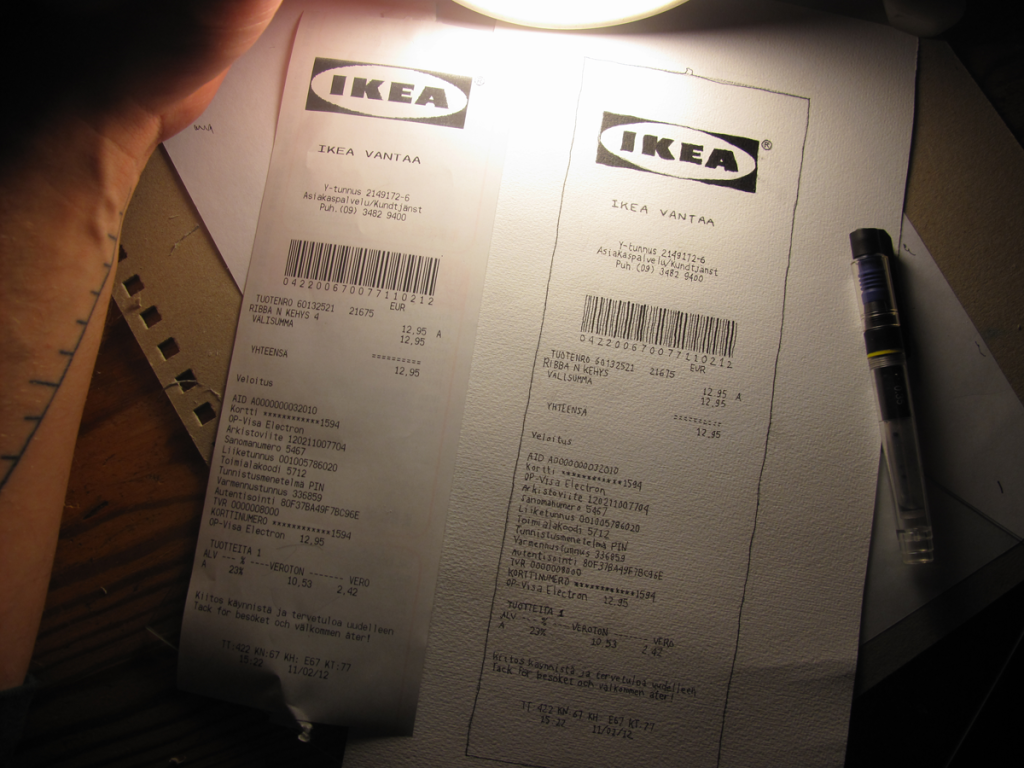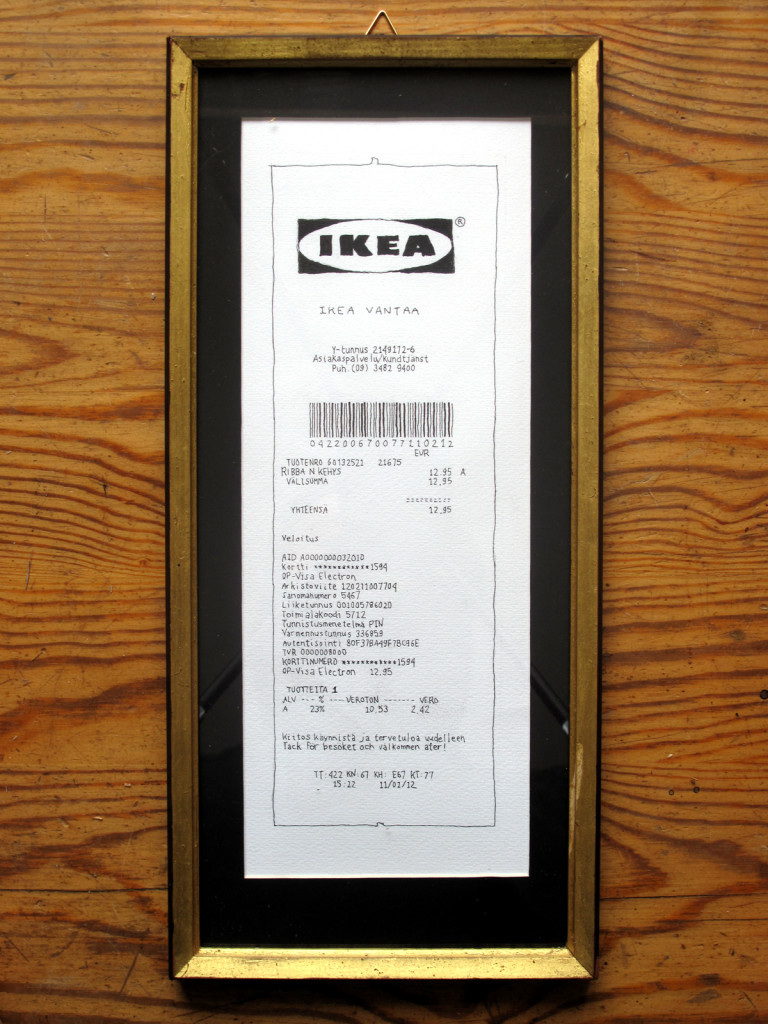
Ever wondered what will happen to your digital documents in the future or how long can you store a thermally printed receipt? Our most common data storing technologies are unsuitable for storing data for more then a couple of years. It’s evident that the majority of digital data we produce today will not be accesible in the future (and it seems that most people are quite unaware of this). This is why we at Ore.e Refineries have kicked off a service targeted for people who want to encapsulate their digital (and otherwise fragile) data into formats which last trough the ages. We call this process Un-Digitization (UN-DI) and the service is called “ D2T (Digital-to-Tangible)– Services“.

When we begun developing the D2T–Service in 2008 we focused exclusively on digital contents. As the first experiment we un-digitized the front page of the most read online newspaper in Finland, Helsingin Sanomat. I was so satisfied with the result I contacted the newspaper staff in hopes making a project with them. The idea was that we’d un-digitize the entire online newspaper during a summer. The act of artists (Me, Jesse Sipola and friends) working to re-mediate a webpage in to a manuscript would have been an interesting event to witness. I exchanged emails with their staff for a year and was helped by Matti Koistinen (from art360) to develop the concept. But I was unable to convince the editorial staff of importance of the project (Details of the proposal are found in Finnish on Ore.e Ref main site in Finnish). I’m still optimistic that the service will eventually find (or create) it’s market niche. Meanwhile we have begun to un-digitize non digital documents too.


Academics hang university diplomas on their office walls but Jesse has a un-digitized receipt documenting a very important sale on his (more on the sale in Finnish). Thermally printed receipts are extremely vulnerable. If they are left in the sun or stuffed in tight trouser pockets they will fade within hours. Receipts are very interesting documents to study and if I remember right archeologist have used data harvested from old receipts (concerning livestock sales) when attempting to estimate sizes of some ancient cultures. Today we are all involved in a historical receipt faraud of a sort as data printed thermally is not even intended to last for long.
People treat receipts as neutral documents but looking at them closely one can find symbols and signs which tell of a bigger story. They are compressed with information on economical legislation, they can be directly linked to global payment card systems and they tell a lot about the digital technologies involved in trade and global logistics. It’s not surprising that people tend to store some important receipts for other then taxation purposes too. They are proof of rites of passages.. I could imagine someone framing a receipt they got when buying their first car for example.


Working with D2T we’ve discovered that the more beautifully data is stored the more likely it is to last. In the example above a mondane un-digitized Ikea receipt has reached new aesthetic heights. I plan to continue with the Ikea theme but even in it’s current form “Ikea 4#” receipt is likely to be considered more valuable then a tagless usb-stick. We haven’t bumped into other studies or research on the subject of “Beauty and Digital preservation“. But it seems like a no-brainer that beautifully encapsulated data is better protected then ugly data. So far the only popularly known experiment which somewhat touches the subject has been WD’s efforts of embedding Morse code in their hard-drive casings. Memory-stick designers and hard-drive designers will surely catch up with this subject soon.
The UN-DI process is typically done by hand on acid free paper with the same type of inks used in pre-industrial books. We believe that artifacts which have been reproduced mechanically last poorly but things which have been reproduced in processes which are dependent on manual labor (and devotion of skilled individuals) are persistent. Manual labor adds intrinsic value to the data storage medium. Ultimately “time spend in the reproduction of a copy” proofs that something is important enough to be cherished and preserved. Manual labor (in reproduction) is time consuming and results into unique details on the document.
This idea is rooted in the tale of the “Transmission of the Classics“. During the fall of the Roman empire a lot of scientific writings where losts. This was due to “the fragile nature of papyrus, as a writing medium”. Old texts which where not copied onto expensive parchments crumbled and so manuscripts covering ancient Greek science and philosophy where thought to have been destroyed (Ref. Wikipedia). Luckily original manuscripts where protected by the Byzantine empire and these documents where translated into arabic by early islamic cultures. These writing came accesible for europeans only after a few hundred years, in the late-middle ages trough encounters with Islamic cultures. It’s speculated that the philosophical and scientific texts Islamic cultures reintroduced to europeans resulted into a mental shift, which prepared them for the era of enlightenment. There is even a myth that some original parchments where stored even though contemporaries could not interpret what was written on them!
Here’s what we’ve dug up on the subject of digital data storing on delicious and please contact Ore.e Ref. if you need the D2T services. To learn more on the receipts documenting a performance at a restaurant look up Framer Magazine Issue 2# “Paying the Bill without Money” (page. 102).

edit 20140303: Similar project found! By Shakeil Greeley

